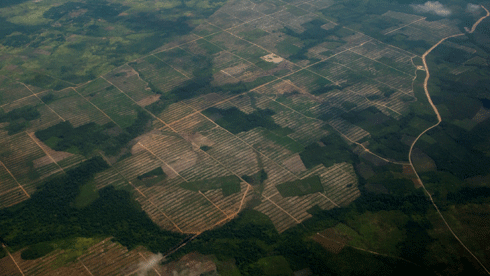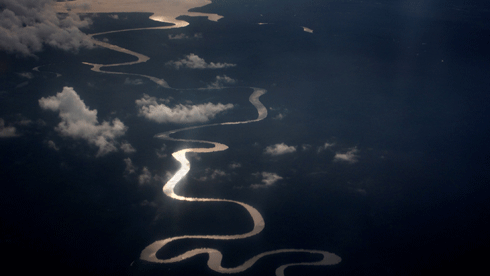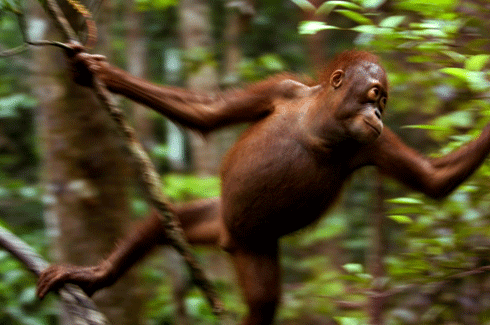
|
Published: 20 December 2010
REDD pilot projects in Indonesia
Pilot projects in Indonesia are generating valuable insights into the potential challenges and risks of an international scheme to reduce emissions from deforestation and forest degradation.
Reducing Emissions from Deforestation and Degradation (REDD) is an incentive strategy that, as currently conceived, involves payments to developing countries for activities that will prevent deforestation or degradation that would otherwise have taken place. REDD schemes can be either ‘market-based’ (ie they generate tradeable carbon permits), or ‘fund-based’ (ie developing countries receive cash or other incentive payments). Although REDD is not yet covered by the Kyoto Protocol, pilot projects are starting in many developing nations, led by NGOs, private companies, national governments and government aid agencies.
REDD is complicated by the politics and people involved. Governance, the rights of local communities, volatile global carbon prices, the complexities of carbon accounting and the challenges of monitoring feature in the convoluted REDD landscape.
In many ways, it is still too early to assess the success of pilot REDD projects. However, a range of initiatives in Indonesia is providing useful insights into the practical and ethical challenges of the scheme.
The latest estimates indicate that deforestation and forest degradation account for ~12 per cent of global anthropogenic carbon dioxide emissions. Carbon emissions from tropical peatland burning and oxidation in South-East Asia – mostly in Indonesia – are estimated to be significantly higher (17 per cent of all anthropogenic greenhouse gases released into the atmosphere).1 Indonesia has the third-highest carbon emissions in the world, much of which is driven by the conversion of existing tropical forests to agriculture.2
An NGO-led REDD project
In Indonesian Borneo, West Kalimantan, a pilot REDD project lead by NGO Fauna and Flora International (FFI) in partnership with Australia Macquarie Bank is seeking to work with local communities to manage their forests as a ‘joint carbon pool’. The forests in this area are under threat of being cleared for enterprises such as palm oil plantations. If the forests remain standing, the project will potentially be able to trade the stored carbon in the global carbon market.
Some of these forests are peat forests, which store significant amounts of carbon. Peat, organic debris that falls to the forest floor, can be up to 22 m deep. It is saturated with water, which prevents it decomposing, and can store carbon for thousands of years. When the forests are cleared, the peat dries out and breaks down in the presence of air, releasing the stored carbon.
FFI carbon accounting specialist, Ms Zoe Ryan, is charged with the job of assessing the amount of carbon stored in tropical forests for pilot and potential REDD projects. She compares the amount of stored carbon with the amount that would be lost if the forests were cleared and replaced with crops such as oil palms. Ms Ryan uses forest vegetation samples, Geographic Information System and remote-sensing technologies such as Landsat images to gather information about potential REDD project areas.
Ms Ryan works with a team of community consultation specialists who aim to reach an agreement with the local community.
‘The local people have to give prior and informed consent. They can say no, they are the ultimate stakeholders,’ she says. ‘The rural communities that are stewards of the forests need sufficient benefits from the program.’
Rimba Raya: NGO and corporate collaboration
On the southern coast of Borneo in Central Kalimantan province, a 500-square-kilometre area of tropical peat swamp forest has been purchased and developed as a REDD program. The Rimba Raya Biodiversity Reserve project developer, Infinite Earth, is collaborating with Shell Canada Ltd, Gazprom Marketing and Trading (a subsidiary of Gazprom, the world’s largest gas company), Orangutan Foundation International and the Clinton Climate Initiative. In this project, Infinite Earth regards itself as conservation project manager, not a carbon broker.
The Rimba Raya reserve, formerly zoned to allow clearance for palm oil, provides habitat for wild and rehabilitated orangutans. By preserving these forests, the project’s managers aim to prevent the release of 96 megatonnes of carbon dioxide equivalent into the atmosphere over the next 30 years. They are also aiming to store twice as much carbon as they sell on the global carbon market, and will set up an endowment with the project’s yearly profits to keep it funded well beyond its 30-year life.
‘The success of REDD will depend on a robust voluntary market, which we're trying to foster, or ideally a global cap and trade scheme that includes REDD credits,’ says Infinite Earth CEO, Mr Todd Lemons. ‘Only at those levels will REDD deliver the returns to investors that will then channel more private sector risk capital into forest conservation.’
Fourteen communities live at the edges of the REDD project forest. Although there is no formal process for obtaining community approval for this project, some degree of consultation has occurred. Village heads have been informed of and consulted on the REDD project plans, and have given their approval on the proviso that the community continued to be involved in the project design and implementation.
‘They [the local communities] depend on access to these forests to survive,’ says Mr Lemons. ‘That access would have obviously been completely obliterated had the project area been converted to palm oil as it was gazetted to be. Given that palm oil has a dismal track record of hiring local communities, their future would have been at serious risk.’
Ms Frances Seymour, the Director General of the Center for International Forestry Research (CIFOR), comments on the uncertainty of how the money from REDD projects will be distributed to local communities.
‘We initially thought that the households would receive cash payments. In fact, it turns out that the projects in Indonesia are using other models. Concession models and investment in community infrastructure such as clinics and schools are being planned, rather than cash payments,’ Ms Seymour says. ‘As far as I know, none of the current REDD projects in Indonesia have got to the stage of transferring funds to the local level.’
The President’s Office of the Indonesian government is currently reviewing its 2009 position that REDD project developers will be required to share between 20–70 per cent of profits with local communities – depending on the forest type and legal ownership – and between 10–50 per cent of profits with the government. A complicating factor is that many local communities have no legal status to their lands, and determining and establishing land tenure and land rights can be a complicated legal and social process for these communities.

|
|
An aerial shot shows the extent of clearing in the Danau Siawan peat swamp forest. Most of the cleared land has been converted to a palm oil plantation. Credit: FFI
|
What defines a forest?
In October 2009, Asia Pulp and Paper (APP) announced that ~15?000 ha of forest originally destined to become a pulpwood plantation in Kampar, in the Riau province of central Sumatra, would instead be used as a carbon reserve.
Ms Chris Lang from REDD-Monitor argues that APP’s use of the term ‘carbon plantation’ creates uncertainty over whether a tropical forest or a plantation is being conserved. The current definition of a forest under the Kyoto protocol could potentially include a plantation. CIFOR’s Ms Seymour thinks this will not be a problem for REDD in Indonesia.
‘If the REDD finance mechanism is based on the actual carbon impacts, I don’t think there is an issue of converting native forests to plantations being eligible to finance due to the loss of carbon in this process,’ she says. ‘More legitimate concerns are essentially leakage – if you are protecting forests in one place, it might displace economic activity to other places that may be low carbon vegetation, but nevertheless important from the perspective of biodiversity,’ she says.
Ultimately, the establishment of the initial REDD projects in Indonesia is a learning process.
‘REDD is exposing the underlying issues that result in surrounding deforestation in Indonesia, such as insecure tenure,’ says Ms Ryan. ‘We have known that they were there – these issues were well documented in the literature – but REDD has exposed the reality of how these issues impact land use behaviour on the ground. Perhaps this process itself is an important step in conserving these forests.’
More information
Fauna and Flora International: www.fauna-flora.org/REDD_kalimantan.php
REDD-Monitor: www.redd-monitor.org
Friends of the Earth: tinyurl.com/foe-redd
Mongabay: www.mongabay.com
Center for International Forestry Research (CIFOR): www.cifor.cgiar.org
Clinton Foundation: tinyurl.com/clinton-climate
1 van der Werf GR et al. (2009). CO2 emissions from forest loss. Nature Geoscience 2, 737–738.
2 Parker C, et al. (2008). The Little REDD Book: A Guide to Governmental and Non-governmental Proposals for Reducing Emissions from Deforestation and Degradation. Global Canopy Foundation, Oxford





